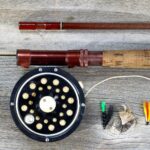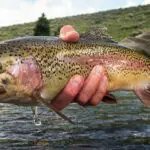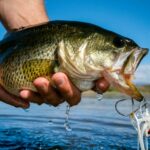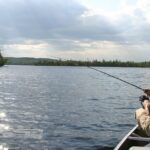Nymph fishing demands both finesse and understanding from the angler. At the heart of this technique lies a question that often stirs debate among purists and innovators alike: Is a strike indicator necessary for successful nymph fishing?
An indicator is not necessary for nymph fishing, but it has advantages that make fishing in certain conditions easier. Purists decline to use an indicator, feeling that it detracts from the skill of the angler. However, it is useful in certain environmental conditions and for novice fly fishermen.
We will explore the nuances of nymph fishing with and without using indicators. Examining the traditional and modern approaches that have shaped the practice and the conditions that may dictate the necessity of an indicator will offer insights into the techniques that can enhance the nymph fishing experience.
Should You Use An Indicator For Nymph Fishing?
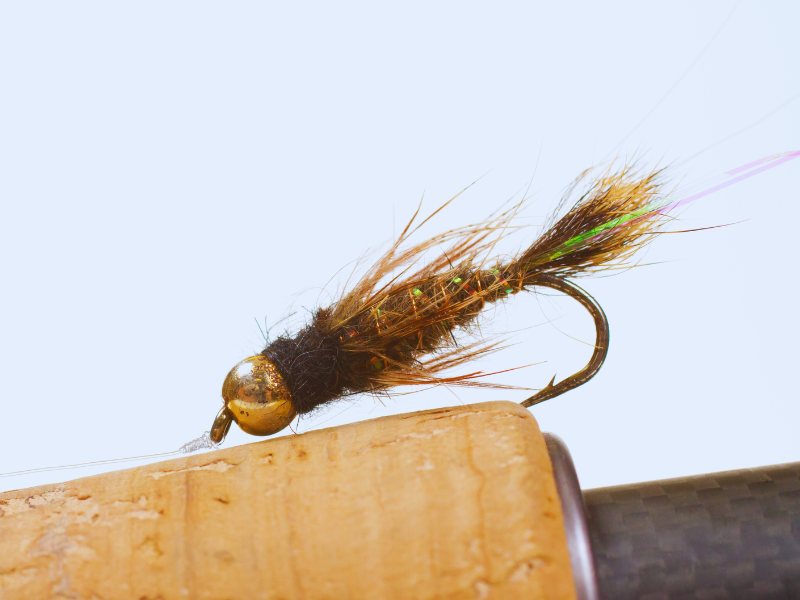
The use of a strike indicator has become a topic of technical scrutiny in the fly fishing community. To the uninitiated, a strike indicator may seem a trivial accessory, yet its role is pivotal in signaling the subtlest takes by fish, a momentary tension, a fleeting pause in the drift that indicates a successful bite.
Nymph fishing is a method within fly fishing that targets fish feeding beneath the water’s surface. Unlike dry fly fishing, where the lure floats atop the water, mimicking adult insects, nymph fishing focuses on the earlier stages of an insect’s life cycle, when they are submerged and particularly vulnerable to predation. This technique is predicated on the understanding that a significant portion of a fish’s diet is consumed underwater, and thus, it requires a different set of skills and knowledge from the angler.
At its core, nymph fishing is about imitation and presentation. Anglers must select and utilize artificial flies—nymphs—that convincingly replicate the appearance and behavior of natural insects. These imitations are designed to sink below the water’s surface, and the angler must present them in such a manner that they mimic the natural movement of the insects being imitated, often a combination of drifting with the current and occasional active movements.
Techniques and Equipment For Nymph Fishing
Nymph fishing employs various techniques broadly categorized into two groups: those using a strike indicator and those not. The strike indicator, often a point of contention among anglers, is a visual aid to detect when a fish has taken the nymph. It floats on the water, and any unusual movement can signal a bite.
The equipment for nymph fishing is specialized yet versatile. A typical setup includes a fly rod, reel, and line designed for the subtleties of the technique. Leaders and tippets are chosen for their ability to present the nymph in a lifelike manner while remaining inconspicuous. Weight may be added to the line or the fly itself to achieve the desired depth and drift.
The Role of Stealth and Observation
Stealth is a critical component in nymph fishing. Fish are often wary and can be easily spooked by the shadow of a rod, the splash of a poorly cast line, or the silhouette of an angler against the sky.
Successful nymph anglers blend into the environment and observe the fish’s behavior and the water’s flow to decide where to cast and how to present their flies.
Adapting to Environmental Conditions
Nymph fishing is not a static art; it requires adaptation to the ever-changing conditions of the water. Factors such as water clarity, flow rate, depth, and the presence of natural insects all influence the approach an angler must take. Mastery of nymph fishing comes with experience and an understanding of the aquatic ecosystem.
Nymph fishing is a sophisticated and rewarding aspect of fly fishing that challenges anglers to understand and replicate the underwater world of the fish they target. It calls for patience, precision, and an appreciation for the subtleties of nature.
What Is A Strike Indicator In Nymph Fishing?
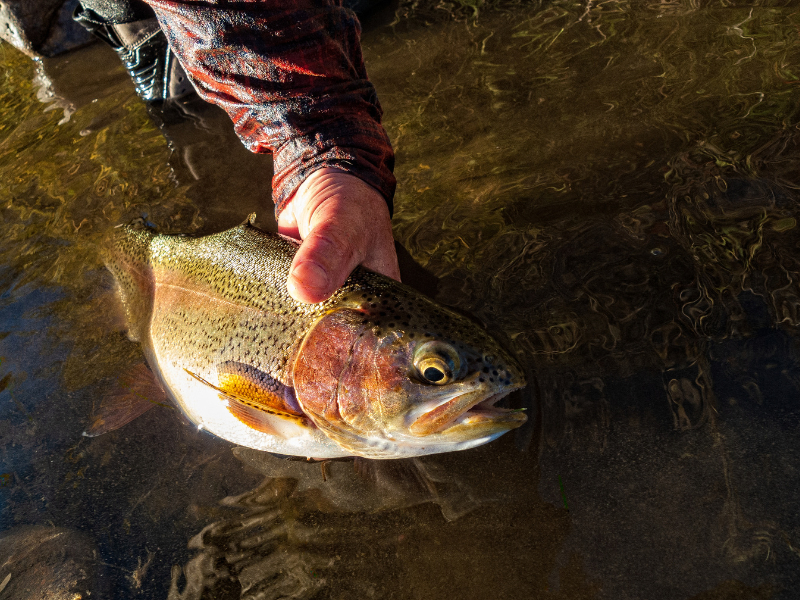
The strike indicator may appear to be a mere float; however, to the adept nymph angler, it is a sophisticated tool that notifies the angler of a fish’s interest in the lure. A strike indicator is a buoyant material attached to the leader or the fly line that serves multiple purposes, the primary being to signal a fish taking the nymph.
Strike Indicator Functionality And Design
When a fish takes the nymph, the indicator may dip, twitch, or, in some cases, move upstream against the current—each a potential indication of a fish interacting with the fly. The indicator’s sensitivity is crucial; it must be buoyant enough to support the weight of the nymph but responsive enough to transmit the subtlest of takes.
Strike indicators come in a variety of shapes, sizes, and materials. Some are made of foam, others of yarn, and some even incorporate high-tech materials designed to enhance visibility and sensitivity. The choice of indicator can be influenced by factors such as water conditions, the weight of the nymph, and personal preference.
The terminology surrounding strike indicators can sometimes influence an angler’s perception of their use. While some purists prefer to avoid terms like “bobbers” or “floats,” which may carry connotations of simplicity and a lack of finesse, others use the term “suspender” to emphasize the indicator’s role in presenting the nymph at the correct depth.
Pros And Cons Of Using An Indicator
There are many advantages to using a strike indicator. For one, it allows for the detection of strikes that might otherwise go unnoticed, particularly in turbulent water or when fishing at a distance. It also aids in depth control, helping to keep the nymph in the feeding zone longer. An indicator can be an invaluable learning tool for those new to nymph fishing, providing immediate visual feedback.
Indicators can increase the chances of detecting strikes, particularly those that are gentle or occur in deep or murky waters where visual contact with the nymph is impossible. They also help anglers to better understand the dynamics of the drift and the behavior of their nymphs in the water.
The use of strike indicators is not without its detractors. Some purists argue that indicators can detract from the natural presentation of the nymph, potentially spooking fish. They can also add complexity to casting, as the added weight and bulk can alter the line’s behavior through the air. The reliance on visual cues can sometimes hinder the development of an angler’s instinctual feel for the bite.

The Case For Fishing Without An Indicator

While the strike indicator is a staple in many fly fishers’ arsenals, there is a compelling case to be made for nymph fishing without one. This approach, often termed “naked nymphing,” appeals to a sense of purity and skill in the sport, emphasizing the angler’s connection to the water and the targeted fish.
Advantages of Indicator-less Nymph Fishing
The following table outlines the key advantages of fishing without a strike indicator:
| Advantage | Description |
| Enhanced Stealth | Without an indicator’s splash and visual disturbance, anglers can present their nymphs more subtly, which is crucial in clear and shallow waters where fish are easily spooked. |
| Depth Control | Anglers have more immediate control over the depth of their nymph, allowing for quick adjustments to keep the fly in the feeding zone without the need to reposition an indicator. |
| Improved Sensitivity | Direct line contact means strikes may be felt more distinctly, allowing for a quicker and more intuitive response. |
| Natural Drift | The absence of an indicator often results in a more natural drift, with the nymph moving freely with the current, mimicking live insects more closely. |
| Simplified Casting | Casting can be more precise and less cumbersome without an indicator’s added weight and air resistance. |
Situations Favoring Indicator-less Techniques
Certain conditions and environments lend themselves particularly well to nymph fishing without an indicator. The table below highlights scenarios where this technique may be advantageous:
| Situation | Reason |
| Clear, Shallow Streams | The visibility of the water allows anglers to see the nymph and detect strikes visually, reducing the need for an indicator. |
| Highly Pressured Waters | A more discreet approach can yield better results in areas where fish are accustomed to seeing indicators. |
| Technical Water | Complex currents and micro-habitats often require precise presentations that are easier to achieve without the hindrance of an indicator. |
Techniques for Successful Naked Nymphing
To effectively fish without an indicator, anglers must hone their line management and strike detection skills. The following table provides a summary of techniques that are essential for mastering this approach:
| Technique | Purpose |
| High-Sticking | Keeping the rod tip high helps maintain a tight line, reducing slack and enhancing the ability to detect strikes. |
| Sight Fishing | Watching the nymph or the end of the fly line for any unnatural movement can indicate a strike. |
| Lifting and Leading | Gently lifting and leading the rod can both entice strikes and provide a better angle for detecting them. |
Fishing without an indicator is not a rejection of the technique but the choice to pursue a different philosophy in nymph fishing. It requires refined skills and a deeper understanding of the river environment. The rewards of improved skill and technique can be significant for anglers willing to invest the time and practice, offering a more immersive and interactive fly fishing experience.
Techniques For Nymph Fishing Without An Indicator
Nymph fishing without an indicator, or “naked nymphing,” is a technique that relies on the angler’s senses and abilities to read the water and detect strikes. This method can be incredibly effective, particularly in situations where stealth and subtlety are paramount. Below, we explore several techniques essential for mastering nymph fishing without the reliance on indicators.
High-Sticking
High-sticking is a technique where the angler keeps the fly rod high, allowing the line to stay off the water as much as possible. This minimizes drag and provides a direct connection to the nymph, enhancing the ability to detect even the slightest takes.
| Key Points | Benefits |
| Minimizes line on the water | Reduces drag and false currents |
| Rod tip follows the nymph’s drift. | Improves strike detection |
| Allows for quick and short line adjustments | Aids in maintaining the nymph in the desired depth |
Sight Fishing
Sight fishing is a method where the angler visually tracks the nymph through the water, looking for signs of a fish strike. This requires clear water and good lighting conditions to see the nymph or the leader’s movement.
| Key Points | Benefits |
| Visual tracking of the nymph | Immediate strike detection |
| Watching for line twitches or stops | No delay in response to a take |
| Focuses on the leader’s behavior | Enhances understanding of underwater currents and nymph behavior |
Lifting and Leading
Lifting and leading involves moving the rod to gently lift the nymph through the water column, simulating the natural rise of an emerging insect. Leading the nymph with the rod tip can also induce strikes by providing a more enticing action.
| Key Points | Benefits |
| The gentle upward motion of the rod | Mimics natural insect movement |
| Leading the nymph with the rod tip | Encourages strikes from the following fish |
| Allows for controlled and intentional drifts | Increases the effectiveness of the presentation |
Controlled Slack
While maintaining a tight line is generally advised, controlled slack can be used to allow the nymph to sink to the desired depth or to drift more naturally with the current.
| Key Points | Benefits |
| Intentional slack is given to the line | Allows nymph to reach deeper waters |
| Slack is managed and not excessive. | Maintains the ability to detect strikes |
| Used in conjunction with high-sticking | Balances depth control with strike detection |
Strategic Casting
Casting without an indicator requires precision and strategy. Anglers must place their nymphs upstream of the target zone, allowing them to sink and drift naturally into the feeding lanes.
| Key Points | Benefits |
| Upstream casting | Ensures a natural drift into the target zone |
| Precision in casting location | Places the nymph where fish are most likely to feed |
| Adjusting casting technique based on conditions | Adapts to different water depths and speeds |
Mastering nymph fishing techniques without an indicator speaks to an angler’s skill and intuition. It requires an enhanced understanding of the environment and keen observation. It takes time to hone these skills, which is why many beginners start with an indicator.
Tips for Successful Nymph Fishing Without an Indicator
Nymph fishing without an indicator is an art that requires skill, patience, and a keen understanding of the water and the fish. Here are some tips to increase your success rate when adopting this purist approach to fly fishing.
Maintain A Tight Line
Keeping a tight line is crucial for feeling the subtle takes of fish. It allows for immediate transmission of the strike to the angler’s hand and facilitates a timely hook set.
| Tip | Reason | Implementation |
| Keep the line taut. | Enhances sensitivity to strikes | Use the high-sticking technique and keep the rod tip raised |
| Minimize slack | Prevents missed strikes | Strip in line as the current brings the nymph toward you |
| Stay connected to the fly. | Allows for better control of the nymph’s drift | Keep a close watch on the line and adjust as needed |
Lead the Fly
Leading the fly involves slightly positioning the rod tip ahead of the drifting nymph, guiding it through the currents and eddies, which can entice a strike from a following fish.
| Tip | Reason | Implementation |
| Guide the nymph | Encourages a natural drift | Point the rod tip where you want the nymph to go |
| Anticipate the current | Prevents the fly from getting ahead of the line | Adjust the rod position as the nymph moves through different currents |
Set the Hook Often
Without an indicator, it can be challenging to distinguish between a strike and the nymph bouncing off the riverbed. When in doubt, set the hook. It’s better to set unnecessarily than to miss a fish.
| Tip | Reason | Implementation |
| Quick hook sets | Ensures you don’t miss subtle takes | Practice a swift, upward motion with the rod at any sign of a strike |
| Frequent hook checks | Keeps the nymph in the strike zone | Regularly check and adjust the depth where the nymph is presented |
Adjust to Natural Cues
Learn to read the water and adjust your technique based on natural cues such as insect activity, fish behavior, and water conditions.
| Tip | Reason | Implementation |
| Observe hatches | Matches the nymph to the natural insects | Choose a nymph that resembles the insects you see on or in the water |
| Watch fish behavior | Informs the presentation of the nymph | Cast upstream of feeding fish and allow the nymph to drift into their path |
Practice Stealth
Approach the water with stealth to avoid spooking fish, especially in clear and shallow streams where fish are more likely to be wary of overhead movement.
| Tip | Reason | Implementation |
| Move slowly | Reduces the chance of casting shadows | Approach the fishing spot with slow and deliberate movements |
| Wear camouflage | Blends into the surroundings | Choose clothing that matches the environment to become less noticeable |
Nymph fishing without an indicator is a rewarding challenge that can enhance your skills as an angler. You can increase your chances of a successful outing by maintaining a tight line, leading the fly, setting the hook often, adjusting to natural cues, and practicing stealth. Remember, the absence of an indicator brings you closer to the subtle nuances of the underwater world, demanding a higher level of attentiveness and connection with the river’s rhythm.
When To Use An Indicator In Nymph Fishing
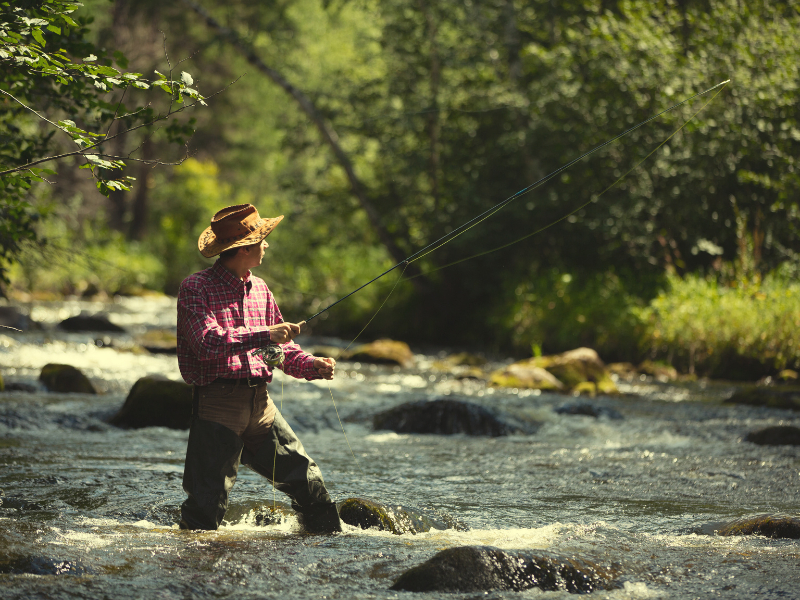
While nymph fishing without an indicator offers a purist approach to the sport, there are circumstances where employing an indicator can significantly enhance the angler’s effectiveness. Understanding when to integrate this tool into your nymph fishing strategy can be the key to a successful day on the water.
Challenging Water Conditions
An indicator can help manage the drift and maintain the nymph in the strike zone in waters where the current is complex or the depth varies significantly.
| Condition | Reason for Using an Indicator |
| Fast currents | Helps track the nymph’s position and maintain it at the correct depth |
| Deep pools | Allows for precise depth control without constant line adjustment |
| Murky water | Enhances visibility when the nymph itself cannot be seen |
Wind and Weather
Adverse weather conditions can make line management and strike detection exceedingly difficult. An indicator can provide a visual reference point on the water’s surface.
| Weather Condition | Reason for Using an Indicator |
| High winds | Maintains line control and assists in visual tracking of the nymph |
| Glare on the water. | Offers a clear visual cue when the nymph is not visible |
| Rainy conditions | Helps distinguish between water disturbance and actual strikes |
Fishing at Long Distances
Maintaining a visual on the nymph or feeling the strike becomes challenging when casting over longer distances. An indicator can bridge this gap.
| Fishing Scenario | Reason for Using an Indicator |
| Long casts | Provides a point of reference to monitor the nymph’s drift |
| Fishing across multiple currents | Assists in understanding how different water layers affect the nymph |
Educational Purposes
For those new to nymph fishing, an indicator can serve as a valuable learning tool, helping to understand the drift dynamics and the timing of strikes.
| Learning Objective | Reason for Using an Indicator |
| Strike detection | Teaches beginners to recognize when a fish has taken the nymph |
| Depth control | Helps visualize how different weights and nymph sizes sink |
Personal Preference and Experience
Ultimately, the decision to use an indicator can come down to personal preference and experience. Some anglers find indicators helpful, while others prefer a direct connection to the nymph.
| Angler Preference | Reason for Using an Indicator |
| Comfort and confidence | Some anglers feel more confident detecting strikes with an indicator. |
| Experience level | Less experienced anglers may prefer the visual aid an indicator provides |
The use of a strike indicator in nymph fishing is not a question of right or wrong but rather one of appropriateness to the conditions and the angler’s objectives.
Whether facing challenging water dynamics, adverse weather, the need for long-distance casting, or simply for educational purposes, indicators can play a crucial role in enhancing the nymph fishing experience. The savvy angler will assess the situation and decide if an indicator aligns with their technique and the day’s fishing conditions.
Conclusion
Whether to use a strike indicator in nymph fishing is influenced by personal preference, practical application, and the angler’s skill. Understanding the conditions and scenarios where an indicator can be an asset or a hindrance is key.
While indicators can be invaluable tools in certain situations, there is also a strong case for honing one’s skills to fish without them, embracing the subtleties and challenges of a more direct approach to detecting a fish’s take.
Whether you choose to fish with an indicator or without, the essence of nymph fishing remains the same: it is a pursuit that demands patience, an understanding of your fishing environment, and a continuous desire to learn and improve your fly fishing skills.
References
- https://youtu.be/aqcptSJ9d6c?si=qyJEHVxv1H8EjWPp
- https://www.scientificanglers.com/indicator-no-indicator/
- https://globalflyfisher.com/fish-better/nymphing-without-an-indicator
- https://flyfishingfix.com/do-you-need-a-strike-indicator/
- https://guiderecommended.com/strike-indicator-fish-nymphs/
- Do You Need An Indicator For Nymph Fishing? - November 16, 2023
- Fishing Safety Tips For Families - September 25, 2023
- What Is The Best Time To Night Fish At A Lake? - September 18, 2023

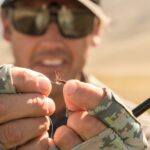


![Fly Fishing for Beginners [Ultimate Guide to Catching Fish] fly fishing for beginners](https://irvinelake.net/wp-content/uploads/2022/11/fly-fishing-man-150x150.png)
